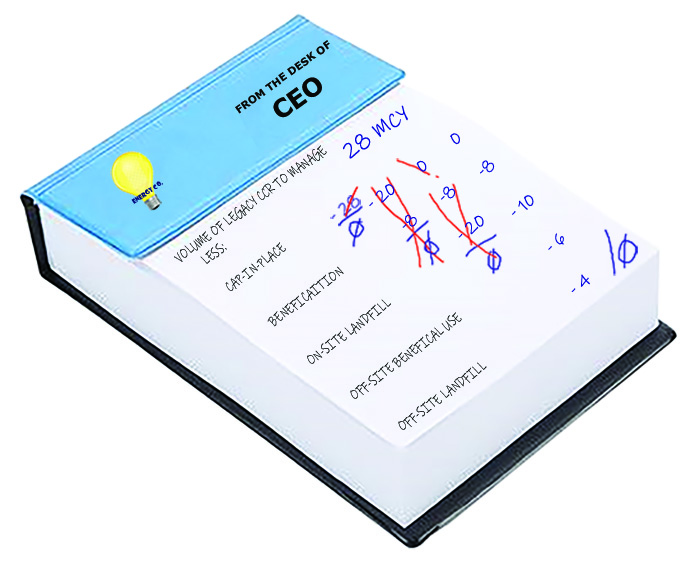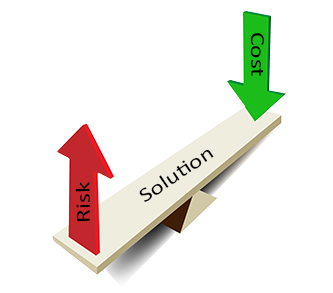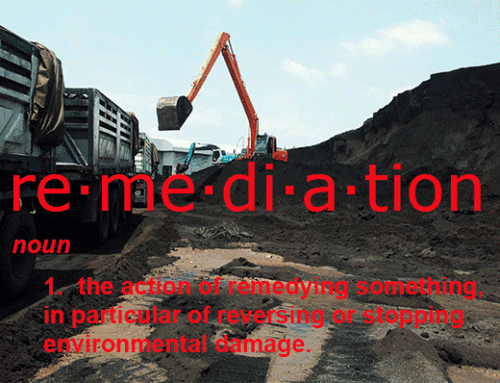It is usually around 4th Grade when kids start to notice the grades sent home on report cards. These written in ink letters share a performance level on daily lessons, homework, and tests. It takes half a second to learn that the lower the grade, the more work a kid needs to do to “catch up.” When evaluating the various CCR deposition strategies available to power utilities and consultants, one must wonder: what grades would each method receive?
In our last blog, we discussed the importance of safety, delivery, and the balance of risk and costs that utilities consider when choosing the best method for their CCR site. In recent discussions, we began to develop a grading system to compare the different methods. When this is applied to the cost factors, it makes for interesting conversations.
Our grading system became the all too familiar A through F, grading each method’s safety, delivery, and risk & cost factors. With 26 years of experience in waste management, including 12 years of CCR management experience, coupled with the countless years of experience from our partner ecosystem, we wanted to share our knowledge. Take a minute to see how EnCAP-IT graded each method.
| Deposition Method | Grade |
On/Off Site |
Cost Range ($/cy managed)1 |
|---|---|---|---|
| Cap-In-Place | F | ON SITE | $17 to $26 |
| Hybrid Cap-In-Place | C | ON SITE | $35 to 53 |
|
Beneficiation [Closure by Removal] |
A | ON SITE | $94 to $141 |
|
Structural Fill [Closure by Removal] |
B | ON SITE | $43 to $65 |
|
New Landfill [Closure by Removal] |
A | ON SITE | $45 to $67 |
|
Expansion of Existing Landfill [Closure by Removal] |
A | ON SITE | $50 to $75 |
|
Basin Retrofit to Landfill [Closure by Retrofit] |
A | ON SITE | $46 to $69 |
|
Beneficiation [Closure by Removal] |
B | OFF SITE | $113 to $170 |
|
Structural Fill [Closure by Removal] |
C | OFF SITE | $62 to $94 |
|
Landfill Disposal [Closure by Removal] |
D | OFF SITE | $69 to $103 |
1– Cost Range determined from projected and actual RFP cost models, media outlets, and government reports. Actual site-specific costs may vary; however, general cost ranges can be calculated.
You may be wondering how these grades were determined. Our decisions are rooted in the three factors that make the right solution: safety, delivery, and risk & costs.
For example, Cap-in-Place may be the cheapest method but scores very low for safety due to the environmental risk standards. Additionally, the score for delivery (permitting and approvals) is suspect at best. In retrospect, regulated utilities don’t even want this solution. The long-term environmental risk is not mitigated; however, the reimbursement risk is more significant.
In our opinion, beneficiation is the best method; however, demand is lower than supply. Market and production volume limitations do not “fit” within regulatory timeframes. At many sites that have set up on-site beneficiation facilities, production volumes can be measured, applied to the CCR closure strategies. However, when applied to regulatory or liability exposure timeframes, it yields excess legacy CCR. That excess needs to be included in the methods below.
On-Site methods are cost-effective, but the space is limited and requires specific safety measures to ensure the groundwater tables are not contaminated. Siting a new landfill, or expanding a new landfill, is a very daunting task. Restrictions to the eventual new or expanded waste footprint, like historical landmarks, cemeteries, wetlands, and local setback requirements, provide challenges to this method.
Off-Site methods are “the last resort”; however, transportation distance, risk and costs diminish its economic value. With limited land for long term storage of CCR (waste), transportation costs play an essential part in these strategies. In most cases, the current capacities of our landfills are “reserved” for current waste streams.
While these grades are not sent to an Ivy League school for consideration, these grades are valuable when determining the best solution for your site.
In our experience, no single method will always be the right method, and there are many factors to consider when planning. Reverting to what has “always been done” doesn’t classify a decision as a grade-A choice. Instead, we recommend flexible solutions.
One part of a flexible strategy is EnCAP-IT’s eMSE solutions.
In our last post, we will discuss how we apply what we have learned and developed over the last 12 years to assist utilities and their consultants. We have been busy!







